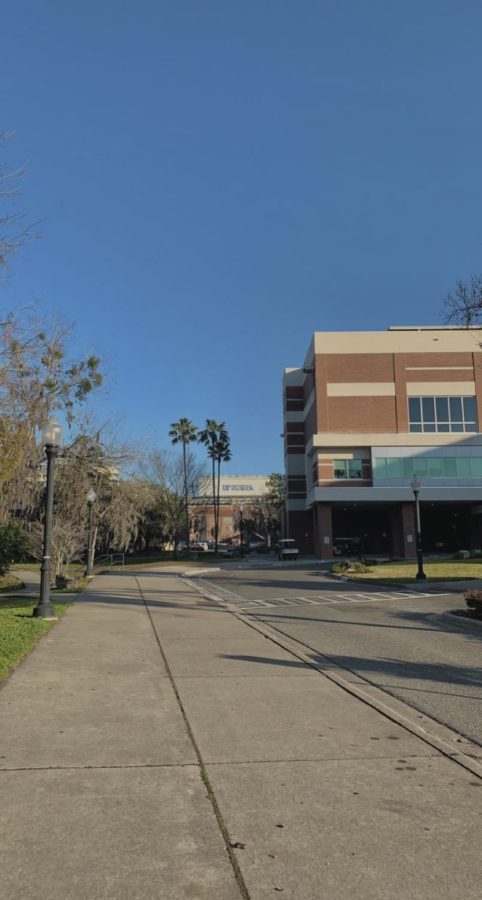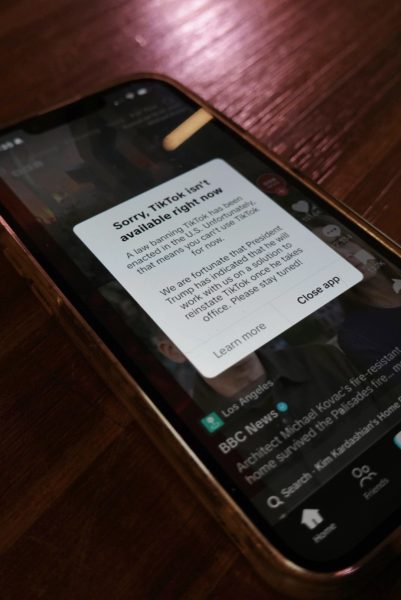Exploring the Capabilities of ChatGPT
The University of Florida has recently begun constructing a new A.I. facility.
The artificial intelligence (AI) text generator ChatGPT responded as follows when asked to describe itself: “I am ChatGPT, a large language model developed by OpenAI. I am trained to understand and respond to natural language inputs in a human-like manner. I can engage in conversation, produce prose about a subject, and more. I am constantly learning and updating my knowledge base to provide accurate and helpful responses.” ChatGPT, an AI chatbot with a reputation for “remarkably accurate” output, poses concerns about the future of communication in our society, whether in the workplace, in school, or in other contexts.
Since its debut in November 2022, ChatGPT has traveled through a variety of newspaper op-ed pages. The media craze regarding the chatbot is understandable in that respect. Some educators are concerned about ChatGPT because of the quality and attention to detail in its responses. For instance, giving ChatGPT the instruction to “create an essay exploring themes in To Kill a Mockingbird” results in a clumsy but usable first draft of a normal English assignment. In educational scenarios, ChatGPT evokes questions about the future and approaches in academic environments. School districts have already started to struggle with ChatGPT. The New York City Public School District, in particular, has since January 6 prohibited the use of ChatGPT on school networks and for academic tasks. Districts claim that ChatGPT allows students to skip acquiring critical thinking and problem-solving abilities, which are crucial to education, citing worries that the site would encourage plagiarism.
Prohibiting the service is not only ineffective but also masks possible beneficial applications of the program. In the same way that relying too heavily on calculators or Google Translate undermines education, so does relying too heavily on ChatGPT. Our fundamental knowledge of these subjects is strengthened when we struggle through challenging grammar structures or meticulously complete challenging mathematical tasks. Essay writing similarly teaches us how to organize our ideas, use critical thinking, and communicate effectively in writing. ChatGPT cannot replace the value of these fundamental abilities. However, ChatGPT can expedite learning processes, making it simpler for students to prioritize their comprehension of different topics, much like how we use calculators to verify our work or speed up calculations. Rather than desperately trying to understand dense Chemistry textbook passages, ChatGPT can paraphrase text, giving students a clearer understanding of a passage’s overall message before they dive into specific details of a concept. For difficult math problems, ChatGPT provides step-by-step explanations, allowing students to study more effectively for exams and improving concept understanding. If we outright reject ChatGPT, we limit our ability to explore the broad range of educational opportunities it can offer.
It’s also crucial to keep in mind that ChatGPT is not a brand-new technology. GPT-3, the foundation around which ChatGPT is built, has been around since 2020, and more generally, our culture is accustomed to AI advancements. The trajectory of AI seems to indicate that these systems, whether they use ChatGPT or other related technology, are here to stay. We are unable to predict where AI will take us in the future, just like when the internet first appeared. But we are aware that AI has the potential to permanently alter our society. As a result, we need to start thinking about these problems now. The growth of ChatGPT makes us think about the role of AI in society, whether it be addressing ChatGPT in schools, addressing racial bias in AI, or analyzing how technological advancements might change the workplace.
In conclusion, ChatGPT’s development gives us a chance to assess our teaching techniques. It makes us wonder: Under what circumstances might a student be enticed to use ChatGPT? Why? Where is this usage beneficial, and where is it dishonest? In light of AI, how might we rethink how students participate in learning? These questions invite us to consider technology ethics, educational innovation, and how AI will influence classrooms in the future.









